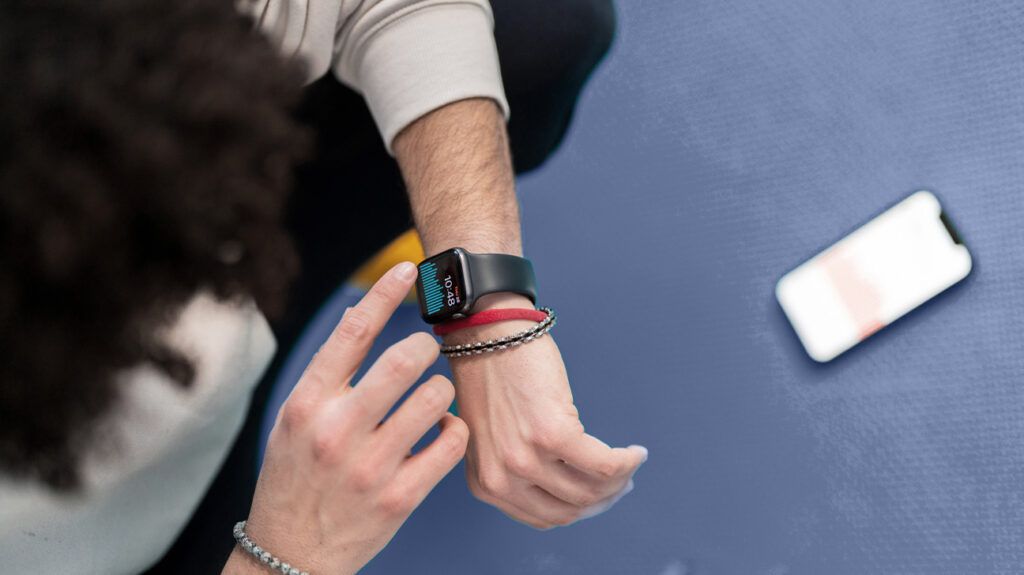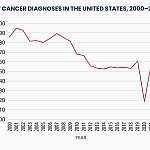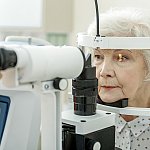
Wearable devices could provide an unprecedented 7 weeks’ advance warning of an inflammatory bowel disease (IBD) flare, according to a new study published by researchers at the Icahn School of Medicine at Mount Sinai in New York City.
The study finds that significant changes in physiological metrics tracked by three popular wearable devices, Apple Watch, Fitbit, and the Oura Ring, occurred in the weeks preceding an IBD flare.
The findings appear in the journal Gastroenterology.
As many as
IBD tends not to be continually active, and people who have it may go for extended periods without experiencing a flare-up of the symptoms that typically arrives without warning.
In the early stages of a flare, a physician may seek confirmation with a blood test and stool analysis, but at that point, the event is already underway. There is a need to better predict flares before they happen.
The Mount Sinai researchers identified signals in the body that turned out to be associated with an imminent flare-up of IBD symptoms:
Significantly, all of these indicators exhibited changes from baseline values up to 7 weeks before any indication of inflammation or IBD symptoms.
For the study, the authors recruited 309 adults from across the United States. All participants had a diagnosis of either Crohn’s disease or ulcerative colitis, and were taking medication for IBD.
Participants were expected to wear their devices 8 hours a day and respond to questionnaires a minimum of four times a week. The study began in December 2021 and ran until June 2023, with individuals remaining involved for as long as they wished.
Rudolph Bedford, MD, a board0certified gastroenterologist at Providence Saint John’s Health Center in Santa Monica, CA, who was not involved in the study, described the uncertainty of living with IBD to Medical News Today.
There is currently no way to predict when symptoms might flare up, he said, “unless you happen to get a blood test or a stool sample just before that flare occurs, but not really.”
“Patients really don’t sense it until the flare is upon them. They may have some abdominal disturbances before they actually have a flare, but that’s usually immediately just before it is about to occur,” Bedford told us.
Having advance warning could empower people with IBD to get ahead of symptoms.
“They may be able to take some changes in what they’re doing before that occurs, whether that’s an adjustment of medication or an adjustment of diet,” said Bedford. “Maybe even getting a preemptory lab test, which again will affirm that a flare is about to occur.”
Bedford said that “things that may cause IBD to flare up would be stress, smoking, and also taking non-steroidal anti-inflammatory drugs, things like ibuprofen, Motrin, and aspirin.”
“There are not too many foods,” he continued, “that will flare up IBD, but for certain individuals that might be the case.”
He suggested people avoid “any foods that might exacerbate somebody’s disease that they know of, or have an inkling they should just stay away from. It can be very individualized from personal to person in terms of what exacerbates the disease.”
Bedford also cited eating plans along the lines of the Mediterranean diet as being good choices for people with IBD.
The current study’s first author is Robert Hirten, MD, Clinical Director of the Hasso Plattner Institute for Digital Health and Associate Professor of Medicine (Gastroenterology), and Artificial Intelligence and Human Health at the Icahn School of Medicine at Mount Sinai.
Speaking to MNT, he described the study as an encouraging first step:
“We find that metrics that relate to physiological activity collected from wearables are able to differentiate whether inflammation is present in the body. These types of changes, however, are likely not specific to one disease. Rather, they reflect and are altered by inflammation in the body. Therefore, our findings will likely be useful in the setting of chronic inflammatory diseases, and may help with the identification of inflammation developing from these conditions.”
“Our group is exploring similar approaches in other chronic inflammatory conditions, such as rheumatoid arthritis,” Hirten reported.
He also noted that he is not aware of any similar research being undertaken by wearable manufacturers.
“Our goal is to develop deep learning algorithms (AI algorithms) that pick up these changes in wearable measured signatures that we have described, and determine the probability or chance that a person will flare,” added Hirten.
“This will enable the creation of an individualized warning system that a person’s inflammatory bowel disease may be worsening or flaring,” he suggested.





